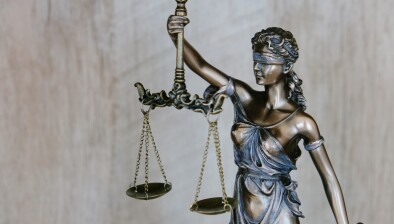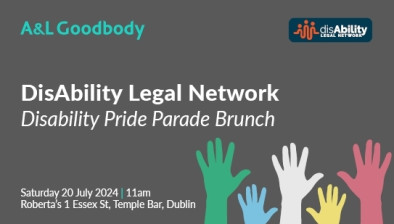New guide for running accessible legal events

Jane Barrett
The disAbility Legal Network has launched a new guide to help event teams in the legal sector to plan and host events that are inclusive and accessible.
The guide, now available online, was produced with support from Sofiya Kalinova BL and draws on the Network’s experience in hosting events in collaboration with the likes of William Fry, Matheson, A&L Goodbody, Mason Hayes & Curran and McCann FitzGerald over the past two years.
Jane Barrett, an associate with William Fry and the Network’s founder and chairperson, said: “We appreciate it will not be feasible to fulfil every aspect of the guide for all events but we hope to show event organisers how to re-frame their event planning with accessibility in mind.
“We hope that, in time, asking those registered for an event in advance about any accessibility needs will become as accepted and common a practice for legal events as asking them about dietary requirements.”
She added: “My own personal challenge with attending events is the use of standing-only spaces for networking before and/or after the event. It takes a toll on my body to stand for long periods. I really hope the guide prompts some event organisers in the legal sector to re-think the standard standing only networking space.”
Caoimhe Grogan, solicitor at A&L Goodbody and the Network’s vice-chairperson, said: “We urge event organisers in the sector to think about accessibility when organising events.
“Attendance at events is important for professional development and building business networks for those working in law. We firmly believe that improving the accessibility of events in our sector will support career advancement for people with disabilities in law.”
She added: “Sometimes professional events can be extremely busy and overwhelming for myself as someone with a visual impairment and for my guide dog, especially since Covid-19 as we are seeing a return to larger events where the focus seems to be on packing as many people as possible into the room!
“At every single event/presentation I attend, there is without fail a visual aspect to the presentation which is not explained for my benefit or others who may have a visual impairment. If I am lucky, a colleague will quietly provide a visual description of what is happening. However, I am often left feeling a bit excluded!
“It is such a small change to provide a description of visual information when you know someone with a visual impairment is in the room, and I really hope that is a takeaway from these guidelines.
“Also, people often forget to introduce themselves by name, forgetting that I cannot see the name tag! There is also some really helpful information around the provision of Irish Sign Language (ISL) interpreters in the guide which I also think is so important.”









